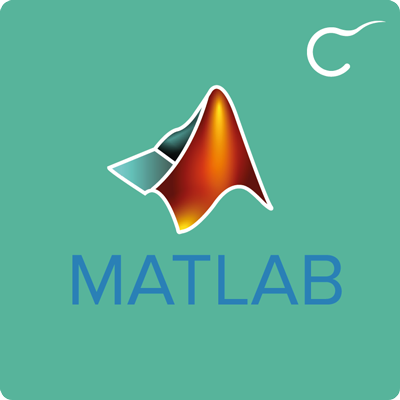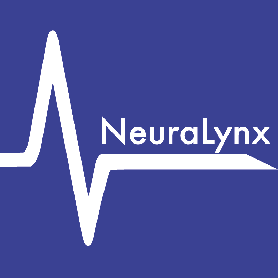Neuralynx offers a variety of animal interfaces that work together to provide the connection between data recording and analysis systems, and the subject’s organic electrical activity. The integration of MazeEngineers with Neuralynx has been done successfully, please include the model of your Neuralynx apparatus so we can ensure compatibility.
Introduction
Research in the neurosciences is a constantly evolving field of study, and neurophysiological techniques continue to progress in conjunction with advancements in the technology of what it takes to examine the animal brain. At the forefront of these developments is Neuralynx©, the main provider of sophisticated electrophysiology systems and high-performance data acquisition hardware and software, with applications in both research and clinical contexts.
The primary goal of electrophysiological recording is to detect and measure communication signals between neurons in real time. Electrophysiology is a tool that allows scientists and researchers to examine the neural bases and neuronal network correlates of simple and complex behaviors, which can tell us a lot about how the brain functions and which brain regions are activated during specific activities. For instance, electrophysiological recording is a widely applied technique in the study of spatial orientation and navigation among rodents, such as grid cell experiments. Experiments such as these typically examine grid cells, place cells, and head direction of the hippocampus and medial entorhinal cortex, which are all part of the brain’s neural network that tells us our position in space. These cell types and regions of the brain are extensively studied by obtaining electrophysiological recordings from rodents during experimental maze trials.
Electrophysiological recordings are achieved by installing electrodes in the animal brain, which come in devices of different varieties and techniques depending on one’s need. The principal types of electrodes are solid conductors such as discs or needles, tracings on printed circuit boards, or hollow tubes such as glass pipettes that are filled with an electrolyte solution. Electrophysiological activity can be recorded inside the cell if the tool is small enough to do so, and scientists can also make use of whole-cell recording, perforated patch recording, and patch recording. Aside from intracellular activity, electrophysiological recording techniques also include single-unit and multi-unit recording, detecting the activity of several nearby cells simultaneously. Currently, technology allows electrodes to be chronically-implanted onto the rodent brain to record brain activity during particular behaviors and can last up to several weeks.
These electrophysiological techniques allow the recording of brain communication across three levels of information processing and communication–microscopic (ion channels, spiking neurons, and neuronal assemblies as the neural substrate); mesoscopic (oscillatory electroencephalographic activity at different scales, which reflect neural networks); and macroscopic (large-scale activation and synchronization for integrative information processes). Currently, modern physiological methods range from single-neuron and neuronal ensemble recordings to recordings of field potentials within discrete brain regions as well as multiple brain areas (Kolev, 2011; Vertes & Stackman Jr., 2011).
Equipment and Set-Up Protocol
Microdrives are tiny devices that carry the necessary components for electrophysiological recording and designed to be chronically implanted on the targeted brain structures. Even with their small size, these devices can carry multiple tetrodes and allow for long-term brain recordings of small, freely-behaving animals in vivo with a duration of up to several weeks. These structures can be superficial layers of the brain or deep structures such as the hypothalamus (Chang et al., 2013). With Neuralynx, users can choose to get the necessary components separately and assemble a custom microdrive or get the Neuralynx VersaDrive, which provides a pre-constructed microdrive jig for installation of tetrode wires and ground connections. The essential components of a microdrive are as follows:
- Base (made of Plexiglas acrylic or similar material). The base will hold the microdrive and be implanted into the animal’s head. It must be sanded to the proper shape.
- The drive unit. The drive unit is fixed with vertical brass guides that will hold the drive screw and electrodes.
- Electronic Interface Board or EIB. The EIB is a microchip that provides a signal connection between the electrode wires and a pre-amplifier headstage.
- Ground wire and tetrodes
The steps to assembling a Neuralynx VersaDrive are as follows:
- Fabricate the tetrodes. The first step to assembling the microdrive is the preparation of its components. Start by fashioning insulated core platinum-iridium wire and form four parallel wires. Through the use of a motorized tetrode spinner, the tightly-spun bundle of four wires shall form the tetrode. Use a heat gun to fuse the wires together. The finished tetrode is a tight bundle of four wires on one end, with the four wires separated at the other end. These separate wires shall be attached to the circuit board later on.
- Assemble the Neuralynx©
- Construct the tetrode carriers. A four-tetrode VersaDrive consists of a base, enclosure, and cap pieces. One must first create a carrier and polyamide tubing for each electrode. These tetrode carriers shall be put within a cap that covers the whole base. Turn the screws clockwise until tetrode carriers are at their top position, and the polyamide tubes are visible through the opening of the cap. The tubing shall then be cut about one millimeter below the base so that all four tubes are of the same length.
- Put the tetrodes through the tetrode carriers. Next, use a dissecting microscope to carefully thread the tetrodes into their respective polyamide tubes, and make sure that they are kept straight. Afterward, secure the tetrodes with cyanoacrylate. The tetrodes must be cut so that they only extend past their polyamide tubes at 2 mm.
- Connect the VersaDrive to the ground wires. Place the base of the microdrive into the VersaDrive jig, and turn the drive screws counterclockwise to put the tetrodes into their lowest position. The VersaDrive cap shall then be connected to the ground wires, through the two pin holes for ground connections at the center position out of the two rows of holes. Cut a copper wire of at least 30 mm and 100-500 µm and guide it through one of these holes. Push a gold receptacle through the hole to catch the wire in place, and apply flux and solder the other wire end to a ground screw. Repeat this for the other ground wire.
- Install the VersaDrive Cap. Guide all the loose tetrode wires, 16 in total, through their receptacle holes in the VersaDrive cap. Install the VersaDrive cap by lining up the insect pin holes and pressing the cap firmly against the base.
- Hold the tetrodes in place with gold receptacles. Press fit the gold receptacles to hold the protruding tetrode wires in place. Once the gold receptacle is in place, cut off approximately 50% of the wires. Repeat these steps for the three other tetrodes. Finally, turn the drive screws clockwise to move them back to the top.
- Gold-plate the electrode tips. The purpose of gold-plating microelectrodes is to maximize the reliability of recording and to discriminate single-unit action potentials and reducing tip impedance.
After the equipment and hardware are all set, the microdrive must then been implanted onto the animal, and the electrodes lowered to the targeted brain regions.
Equipment and Set-Up Protocol
In successfully setting up a data-acquisition system, the accompanying software is a necessary component in gathering the data recordings from the microdrive hardware. An amplified data acquisition system, such as the Neuralynx Digital Lynx 4SX and 16SX, is needed for recording neural signals.

Pulsepal Integration
Various Gantries for various mazes. Get one of these contraptions for your maze today for video.

Matlab Integration
Various Gantries for various mazes. Get one of these contraptions for your maze today for video.

Neuralynx Integration
Neuralynx offers a variety of animal interfaces that work together to provide the connection between data recording and analysis systems, and the subject’s organic electrical activity.
Noldus EthoVision XT
EthoVision® XT is a state-of-the-art video tracking system for automatically recording animal activity and movement.

Anymaze Integration
The ANY-maze Behavior Tracking Software is a sophisticated video-tracking system for recording animal activity and movement during behavioral tests.
Summary and Key Points
The use of data acquisition systems and electrophysiological techniques is a complex method in behavioral neuroscience that can provide infinitely dynamic, sophisticated, and reliable results. Recording the brain in real time involves highly-advanced technology and expertise, and with the help of Neuralynx and their wide array of products, electrophysiology has become an easier feat for scientists and researchers.
To record the electric fields generated by each neuron in the brain, triangulation is done through the use of multiple sensor channels. Neuralynx is at the forefront of providing this technology, delivering high-density electrophysiology with up to 512 channels. The powerful software offered in Digital Lynx 4SX and 16SX provides the lowest noise and the largest signal input range. Additionally, neuralynx also offers headstage amplifiers, devices with the primary purpose of providing up to tenfold signal amplification. The totality and comprehensiveness of the products and services offered by Neuralynx is a true mark of excellence and superiority of the brand in the field of electrophysiology.
Strengths
- Through the electrophysiological techniques offered by Neuralynx©, scientists and researchers can detect and measure communication signals between neurons in real time, and examine the neural bases and neuronal network correlates of simple and complex behaviors.
- Neuralynx offers a variety of animal interfaces that work together to provide the connection between data recording and analysis systems, and the subject’s organic electrical activity.
- Microdrives are tiny devices that carry the necessary components for electrophysiological recording and designed to be chronically implanted on the targeted brain structures.
- With Neuralynx, users can choose to get the necessary components separately and assemble a custom microdrive or get the Neuralynx VersaDrive, which provides a pre-constructed microdrive jig for installation of tetrode wires and ground connections.
- The major components of a microdrive are the base, the drive unit, the Electronic Interface Board or EIB, and the ground wire and tetrodes.
- An amplified data acquisition system, such as the Digital Lynx-4SX or 16SX, is needed for recording neural signals.
References
Buzsaki, G., (2016). Lecture on large-scale recording of local field and action potentials.SwissTech Convention Center, Lausanne, Switzerland. Retrieved from https://www.youtube.com/watch?v=7EQI_sFwXMI, thebrainforum.org
Khan, F. R., & Henderson, J. M. (2013). Deep brain stimulation surgical techniques. In Handbook of clinical neurology (Vol. 116, pp. 27-37). Elsevier.
Pan, W. J., Thompson, G., Magnuson, M., Majeed, W., Jaeger, D., & Keilholz, S. (2010). Simultaneous FMRI and electrophysiology in the rodent brain. Journal of visualized experiments: JoVE, (42).
Chang, E. H., Frattini, S. A., Robbiati, S., & Huerta, P. T. (2013). Construction of microdrive arrays for chronic neural recordings in awake behaving mice. Journal of visualized experiments: JoVE, (77).
Vertes, R. P., Stackman R. W. (Eds.) (2011). Electrophysiological recording techniques. Humana Press.
Kolev, V. (2011). Book review of Electrophysiological Recording Techniques, edited by Robert P Vertes and Robert W Stackman, Jr. Biomedical engineering online, 10, 63.

